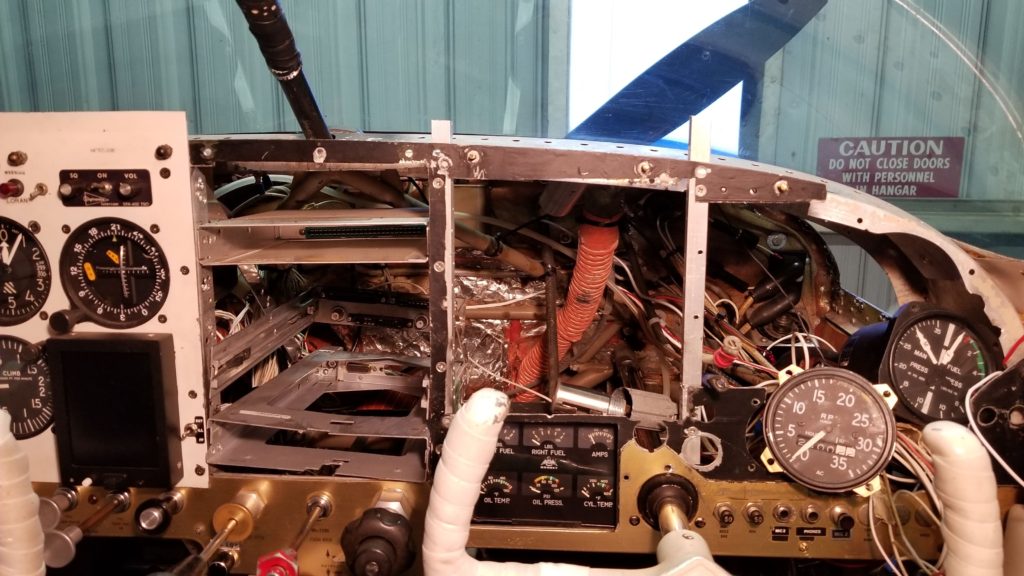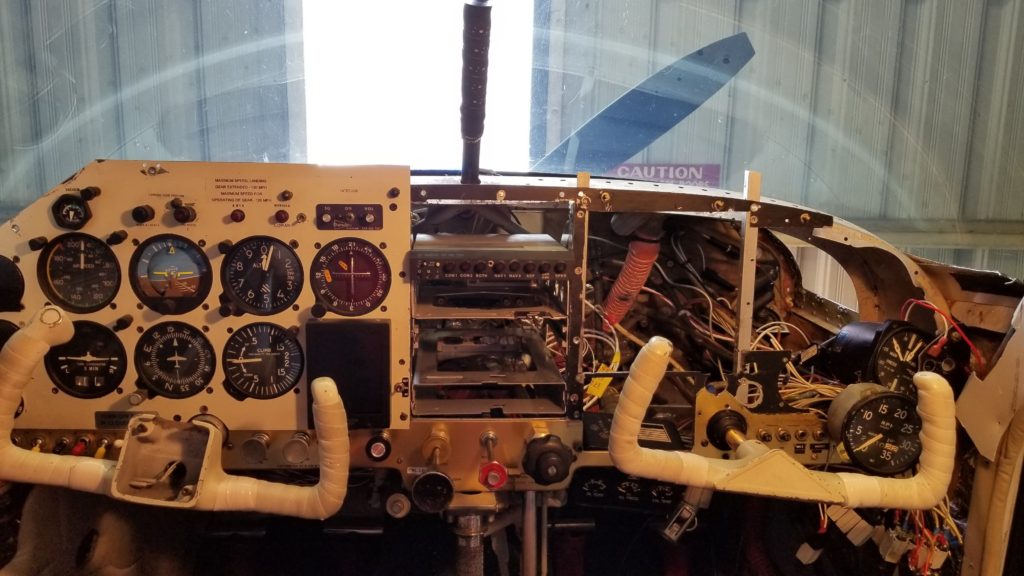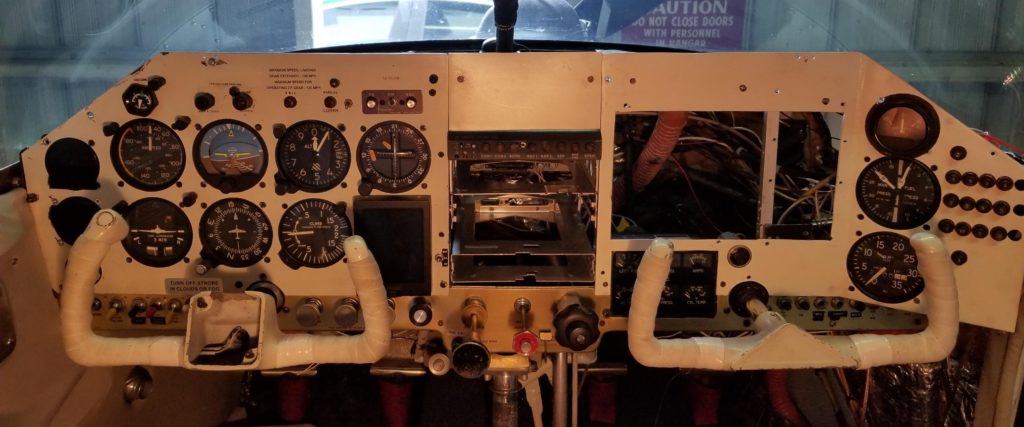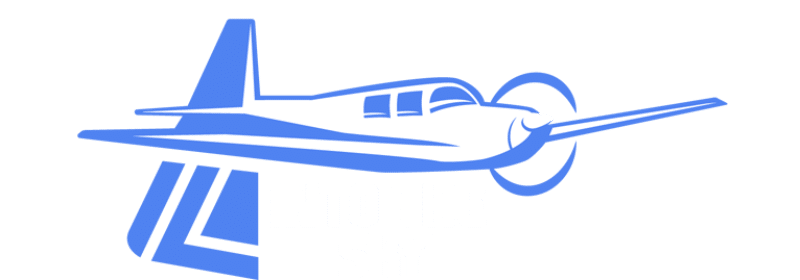Like many other plane owners I have been debating how I was going to comply with the FAA’s 2020 mandate to be equipped with ADS-B (Automatic Dependent Surveillance Broadcast) Out. If you fly withing 30 nautical miles of a Bravo Class airport (for me that is everywhere I regularly fly, Los Angeles, Phoenix, and Salt Lake) your plane must be equipped and broadcasting ADS-B out. Where my old transponder would provided location and altitude, an ADS-B transponder provides much more accurate location information to Air Traffic Control. I have had ADS-B in (providing traffic and weather to my tablets) for a couple years now courtesy of a Stratux I built with online directions from a Raspberry Pi , but that was cheap at just over $100 for the parts. Equipping for ADS-B Out has the potential to be up to or over 10% of what I paid for the plane…
The FAA is (was) offering $500 rebates to help with the cost, but there was a limited number of them. One option is to install (easy) a unit that replaced the left navigation light and would rebroadcast the signal from your existing transponder. This solution, while less expensive, relies upon your existing transponder. My current one was ancient and while considered reliable it has the potential to give up the ghost and then I would be left needing to by a new transponder. Another option would be to spend about 30% more (in parts) than that and put in a new transponder that would meet the requirements.
I had logged on to the FAA’s site and it was listing less than 1000 rebates left. I also saw that there was a package special providing the transponder, altitude encoder, GPS WAAS antenna, and the best part of it was it comes with a wiring harness which simplifies the installation. I checked with my AP/IA to see if he would let me do the install under his supervision and he agreed. The last step was to contact a friend and see if he could match or beat the local distributor’s price on the package and he could, so I ordered the kit from him and reserved my rebate just in time, five days later there were no more rebates available.
This will be simple I thought, there is a space between my #1 Nav/Com and the audio panel where I can put the transponder, the old unused loran antenna will be replaced with the GPS antenna, I have to make and run the RG-400 coax cable and then hook up power and ground. If only it was going to be that simple. I removed the front seats, the trim over the baggage area to access the antenna, the trim up the left side of the cabin to be able to run the cable, the panel under the belly to replace the old cable going to the transponder antenna, and took the right side of the panel apart and pulled the radios. That was when I hit the first snag in my plan, finding out that the space between the radio and audio panel was about 1/4″ to short and I was going to have to move both radios down to make room.

Everything pulled apart. If you are wondering, the thought does cross your mind that you have to put it all back together. 
All the trays mounted in the rack. 
Panel back together waiting on my AP/IA to install the new control cables and inspect my installation. 
New Panel.
Many hours later I finally had the trays mounted in the stack. The old transponder was in the right side panel so I opened it up more to make it easier to work without removing the whole thing and made a filler plate that could be installed and removed easily. It was a number of hours later than that when I had made the cables and run them from the antenna location and up to the back of the panel, the transponder antenna under the plane up to the back of the panel, and put everything back together, leaving the new hole in the panel open for my AP/IA.
Shifting topics here, there are Airworthiness Directives (required by the FAA to be completed for the plane to remain airworthy), and Service Bulletins (put out by the manufacturer that are not required but are a good idea). There was a SB put out by Mooney back in 1969 to replace all the control cables, throttle, mixture, and prop because of the risk of them breaking. My cables looked like they were original. I went all the way back through the log books and while I found the prop control cable was replaced in 1990 I could find no record of the throttle or mixture control cables being replaced.
McFarlane (who makes cables and has an interest in selling cables) recommends that they are replaced at TBO which is 2,000 hours for my Lycoming O-360. Regardless, these have been in the plane way longer than TBO. Another reason to replace them at engine overhaul is because there is not much room to work and having the engine out makes it easier. I decided it was good insurance to replace them and at least with the right side of the panel opened up there was a little more room for my AP/IA to work so had ordered up the cables and got the replacement on the schedule.
There are warnings not to power on the transponder until everything is hooked up and I was waiting for the doubler to be installed for the antenna. By Wednesday the antenna was installed and I could slide the transponder in and turn it on, the moment of truth. Would it pass the “smoke test?” What is the “smoke test” you are asking yourself? Well, there is a running joke that all electronics are built with smoke inside them, and as long as the smoke stays inside them they will continue to work. When the smoke escapes, they no longer work. I slid the transponder in the tray, flipped on the master switch, flipped on the avionics master, and pushed the power button on the transponder. Much to my relief it powered up and passed the “smoke test.” I went through and set all the configs so that it would be ready to be tested.
Thursday early morning the avionics guy ran the transponder check and everything was perfect, all that was left was to have the mixture cable installed and finish putting everything back together which I thought would be quick and easy (two things that never apply to working on the plane but apparently are lies I continue to tell myself).
Friday evening was another late night working on the plane, but when I went home for the night the plane was ready for a test flight.
Saturday, the real moment of truth, would the cables all work right? Would the transponder work right and pass the check? It was time to find out. After puttering about for a few hours in the morning, cleaning up the hangar, cleaning the plane, and having lunch with my wife I did a pre-flight and pulled the plane out. I pumped the throttle to prime it and wow, that cable was smooth. She started right up and I leaned out the mixture to keep from fouling the plugs, again impressed by how smooth the cable operated.
I taxied to the run-up area and very slowly went through everything, paying close (probably closer than normal) attention to feel of the cables and the gauges as I adjusted them. I could not believe how smoothly they operated. With run up complete I called up ground and was cleared to taxi. After one plane took off and another landed I was cleared for takeoff and a right turnout for a northbound departure.
For the ADS-B certification flight you have to fly for at least 30 minutes in “rules airspace” which for me would be easy, I just needed to stay inside the mode-C veil for LAX (30 nm radius from LAX). I climbed to 3,000′ and flew north to near Azusa and did a couple of 360 degree turns before heading back south-west right over the top of Fullerton, past Los Alamitos and Long Beach Airports, and out to the coast. After a short flight along Seal Beach I turned north-west and flew over the Port of Long Beach and around the Long Beach Airport’s airspace and back to land at Fullerton.
It was a little bumpy, but the plane flew great. The new control cables felt amazing, and the prop which would wander up and down 10-20 rpms was rock solid with the new prop control cable. After getting home it was time for the second moment of truth, logging onto the FAA’s site to see if the transponder passed the check. Everything was green, awesome! A few minutes later and I had submitted my request for the rebate.
Finally, the plane was back together and everything was working properly, time to just get some hours in the air.











